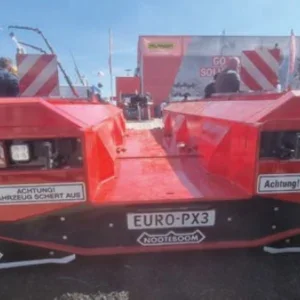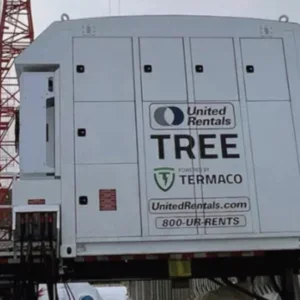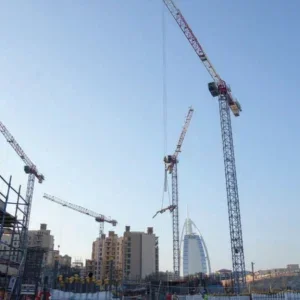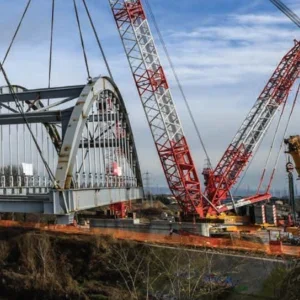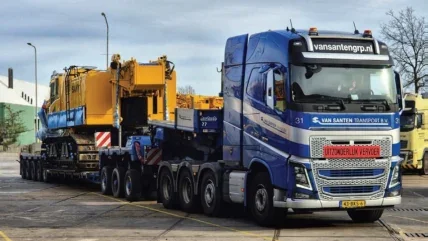
Lifting is all well and good when you’ve got plenty of space in which to do it. Not all jobsites, however, are obliging like that. So what do contractors do when trying to lift in rough, muddy jobsites with possibly restricted access or confined space in which to move? Utilise the services of a telecrawler, of course!
The transportability, compact design, and ‘pick and carry’ abilities of this crane type further add to its appeal; it’s no wonder telecrawlers are in demand around the world.
Foundation work is exactly the type of application that telecrawlers are best suited to and Chinese manufacturer Sany reports that it is experiencing strong demand for its telecrawlers from European foundation companies – especially in the Netherlands and Benelux regions where its electric offerings, in particular, are proving to be a hit.
SUSTAINABLE SOLUTIONS
In 2024 Sany sold its first 100-tonne capacity SCE 1000 TB-EV electric telecrawler in Europe to transport and lifting specialist Van Santen Group. It was sold through Sany’s dealer for Benelux Sassenheimheadquartered Sanycranes.services which is headed-up by managing director Roland Quarré (who is also MD of UCM Holland).
The crane has a maximum boom length of 49.9m and a maximum lifting moment of 360tm. This can be extended with a folding jib of 17.5 metres.
The crane has an LFP battery pack of 282 kWh, which enables it to run for 8 to 10 hours. By connecting the crane directly to the power grid via a plug-in in the undercarriage, it is possible to recharge in between jobs or even boost the charge whilst the crane’s power reserves whilst it is working.
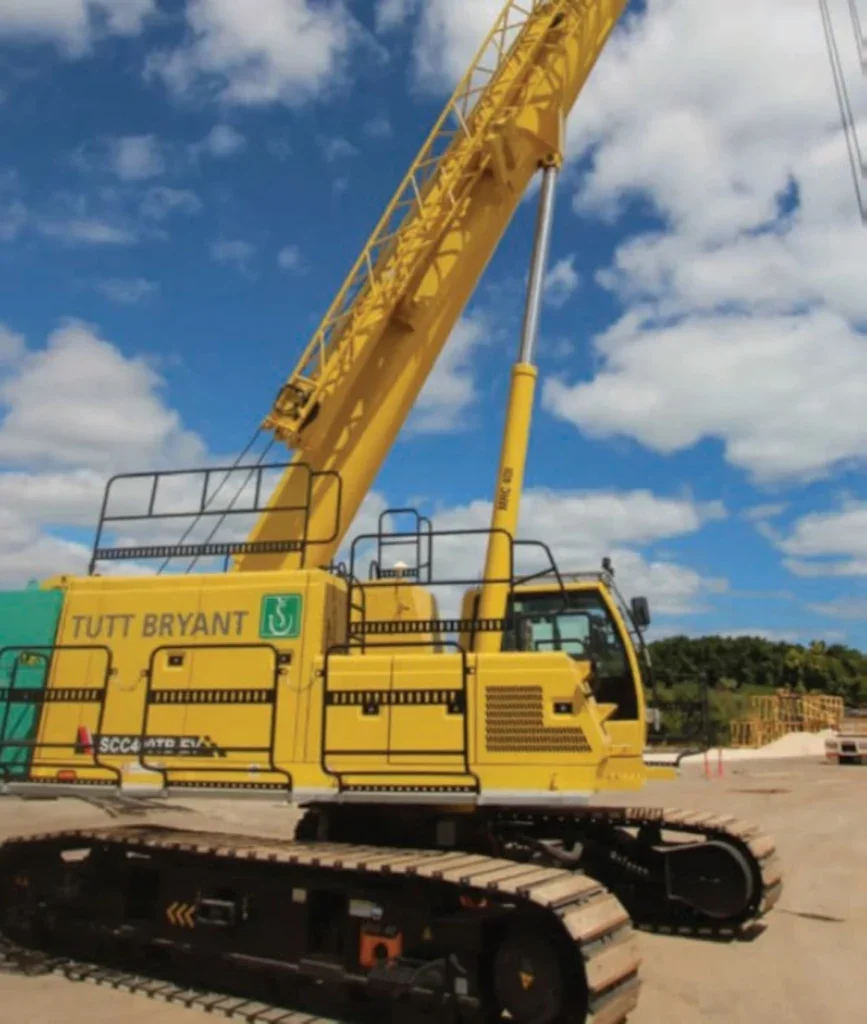
AC and DC charging ports can be found in the superstructure.
The transport and lifting firm, based in Haarlem, travelled to the port of Zeebrugge to pick up the crane itself and transported it to Sassenheim where importer Sany Cranes services/UCM Holland further prepared it and added Van Santen’s livery.
Van Santen says that the addition of the crane to its fleet is helping it meet increasing demand from its clients for sustainable solutions.
Sany’s flagship electric telecrawler available in Europe is the 80 tonne SCE800 TB-EV which launched at Bauma 2022.
In 2024 Latvian crane company Heavy Cranes, which is also Sany’s official dealer in the region, bought two units, while Dutch foundation specialist Kandt ordered one at the start of the year. It is the first electric telecrawler the company owns.
At the end of 2024 Dutch lifting and transport company Herpertz Crane Rental ordered its second SCE800 TB-EV.
The crane has a five-section, 47 metre telescopic boom and a maximum load moment of 300 tonne-metres. It is powered by a 282 kWh lithium iron phosphate (LFP) battery pack and utilises a 600 Volt DC permanent magnet main drive motor from Danfoss.
On the other side of the world, in Australia, Tutt Bryant Heavy Lift & Shift (TBHL&S) bought the first Sany SCC400TB-EV cranes in the country. The crane order comprises several units which are being utilised within TBHL&S’s own fleet with the rest for sale.
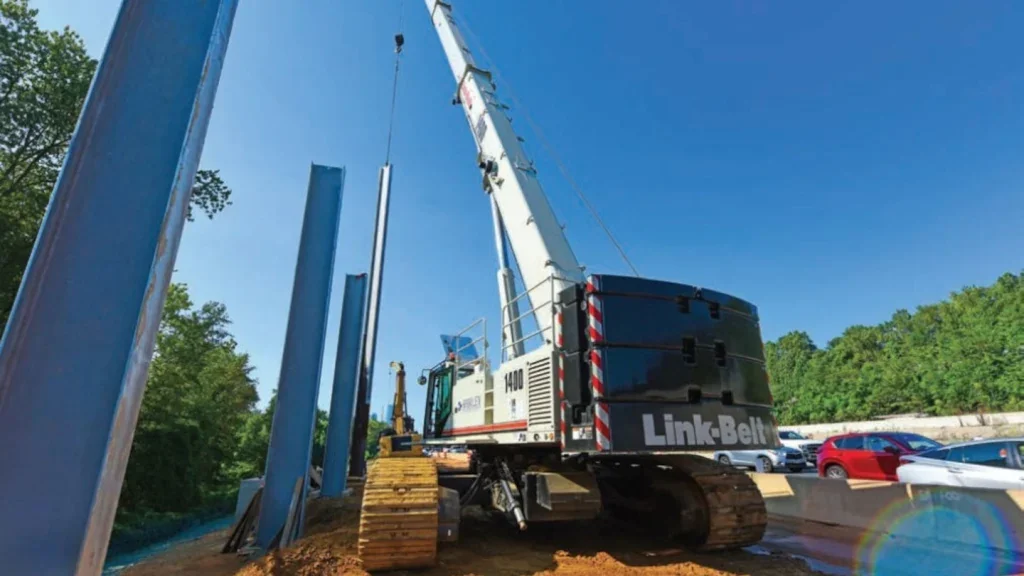
The 40-tonne capacity batteryelectric telecrawler offers smooth operation and is user-friendly, says TBHLS. “The working time for each cycle of the 210 kWh battery is way beyond our expectation,” says Trevor Haylot state manager for Queensland at TBHL&S. “It was stated as being eight hours but we’re finding it easily lasts more than a day-anda- half.”
VALUING VERSATILITY
Versatility is another important characteristic of telecrawlers. They combine the robustness of crawler cranes, excelling on rough terrain, with the ability to move with loads as seen in pick and carry cranes.
This versatility is a key feature highlighted by USA-based Shirley Contracting Company of Lorton, Virginia, which is using a 140-ton (127 tonne) TCC-1400 from Link-Belt Cranes to assist the construction of an express lane extension project in Tysons Corner, Virginia.
“At the end of the day we want the right machine for the job and we really value versatility,” said Shirley Contracting equipment manager Patrick Crocker.
As part of the project, which looks to extend northbound Interstate 495 express lanes to the Maryland state border, the TCC-1400 is picking sound wall panels and posts and driving abutment pile to create a Mechanically Stabilized Earth (MSE) wall, showcasing its functionality across jobs. With a project scope that extends close to two miles, Crocker said the TCC-1400’s reach and transportability distinguishes it from other cranes.
“The 1400 sits on a job right now doing the work of three rough terrain cranes,” Crocker said. “On this type of job it’s a hell of a lot more productive.”
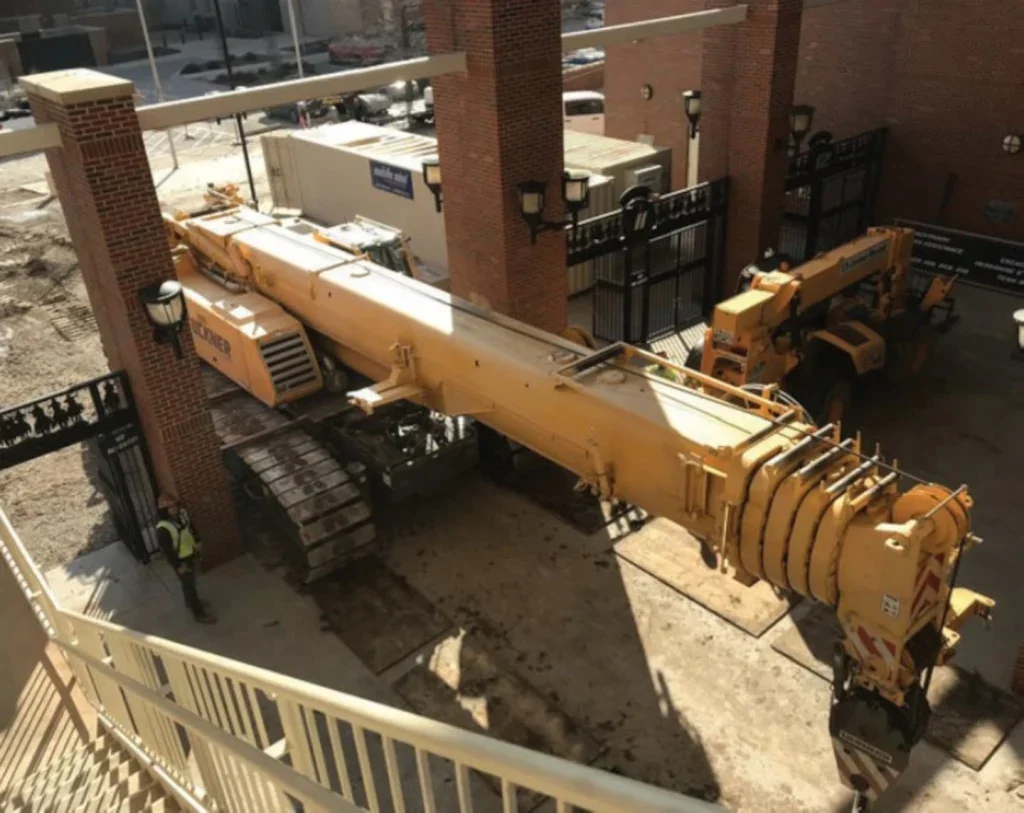
Aside from picking and placing the 8-by-20-foot sound wall panels, weighing 19,000 lbs each, and driving pile for the project, the TCC-1400 helped with box culvert replacements, as well, further displaying its versatility.
Crocker said the TCC-1400 has proven itself time and time again to be indispensable on the job, leading him to believe more purchases are in the pipeline. “Given the track record with this crane I wouldn’t be surprised if we purchased more,” Crocker said.
The TCC-1400 is one of seven Link-Belt machines owned by the company which has been buying Link-Belts for many years. “In fact, the very first crane the company purchased was a Link-Belt, an LS-108 lattice crane, which we still own,” Crocker added.
TOUCH DOWN
Another US company that incorporates telecrawlers as a key tool in its fleet is Graham, North Carolina-headquartered Buckner HeavyLift Cranes.
In 2024 Buckner provided a solution for a customer looking for a crane to assist with renovations at the T. Boone Pickens Stadium at Oklahoma State University.
According to Buckner its Liebherr LTR1220 was the ideal crane for this project with suitable capacity to 245’ of lift radius and the ability to crawl into numerous lifting locations without the need to disassemble each time.
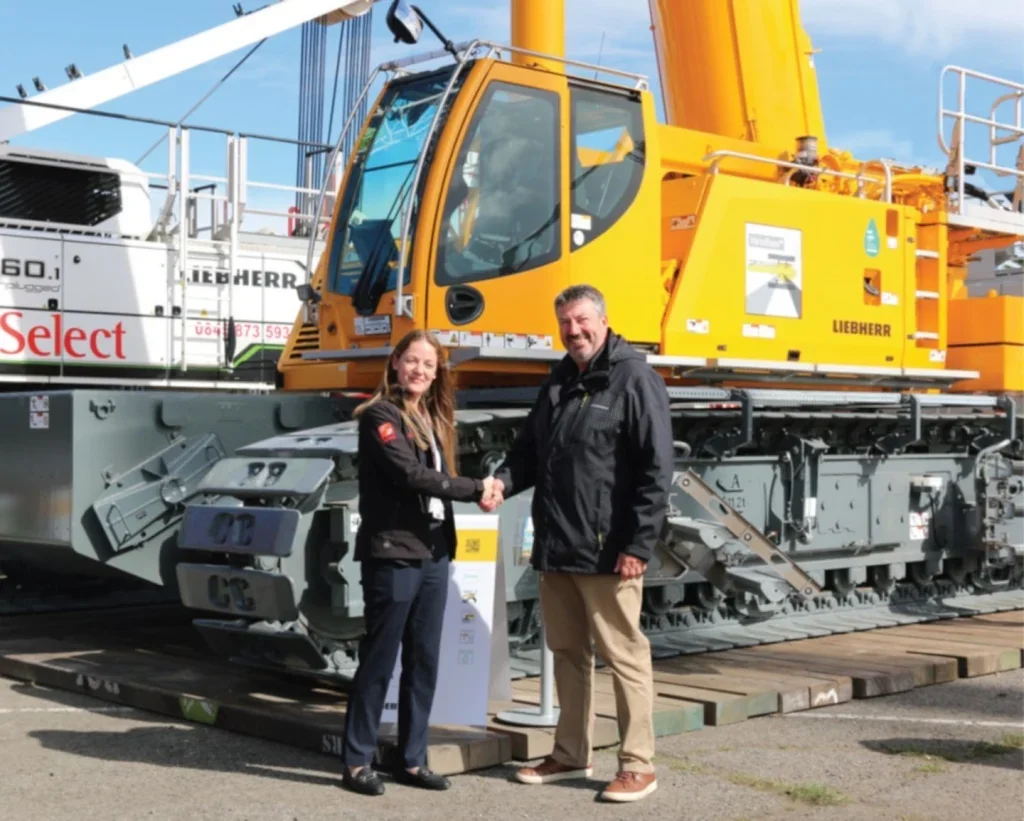
One of the challenges the crane overcame was crawling through a narrow 16’-2” corridor at the 20 yard line before being positioned between the 30 yard lines to reach into the far corners of the 200-level seating area.
Recently US crane industry magazine American Cranes and Transport reported that Buckner has expanded its fleet with the addition of some of the first Liebherr LTR 1150 telecrawlers in the country. The LTR 1150 was launched at Intermat 2023.
Meredith Williams, chief operating officer at Buckner is reported as saying: “For years now Buckner has had one of the most expansive Liebherr telecrawler fleets. The addition of the LTR 1150 makes perfect sense within our overall fleet. The willingness of Liebherr to hear our feedback as owners of their other telecrawler models and incorporate that into the design made this new model that much more attractive.
“The first unit will be deployed in the wind industry, which has long been partial to the flexibility and manoeuvrability of the Liebherr telecrawlers.
“While we see wind projects – both new erection and repower work – as the perfect home for this first unit, we know other industries are going to enjoy the same advantages of this new model on other projects soon.”
“At Buckner, our telescopic crawler fleet has consistently demonstrated exceptional utilisation rates,” Brian Miller, vice president of sales for Buckner is reported as saying. “Initially, we invested in telescopic cranes to complement our large lattice crawlers. However, their versatility, manoeuvrability and lifting capacity have led them to become standalone solutions for a wide range of projects, outperforming traditional rough terrain cranes.”
FLEET EXPANSIONS
And in the UK Select Plant Hire, one of the UK’s largest suppliers of equipment and services to the UK construction industry (which Liebherr says also has one of the largest telescopic crawler crane fleets in the UK and the world) concluded a two-machine order for the LTR 1150 at lifting and access tradeshow Vertikal Days.
The package comprises a duo of LTR 1150. The units are the latest purchase in a £20 million strategic investment in the latest stage V emission cranes and zero emission unplugged crawler cranes.
Bridging the gap between the LTR 1100 and the LTR 1220, the 150-tonne crawler crane has a sixsection 52-metre main boom and when configured with two sevenmetre lattice inserts and a 10.8 to 19 metre assembly jib, a hook height of 83 metres and a radius of 76 metres is possible.
In addition to its lifting capabilities Liebherr says the LTR is the only crawler crane in its lifting capacity class that can be transported on one low loader complete with its crawler carriers, totalling 60 tonnes and a width of just 3.5 metres, thus making it economical to transport to job sites.
The unit further features Liebherr’s outrigger beam support system, Variobase. It is the first telescopic crawler crane to be equipped with such technology that is usually seen on the Liebherr mobile cranes.
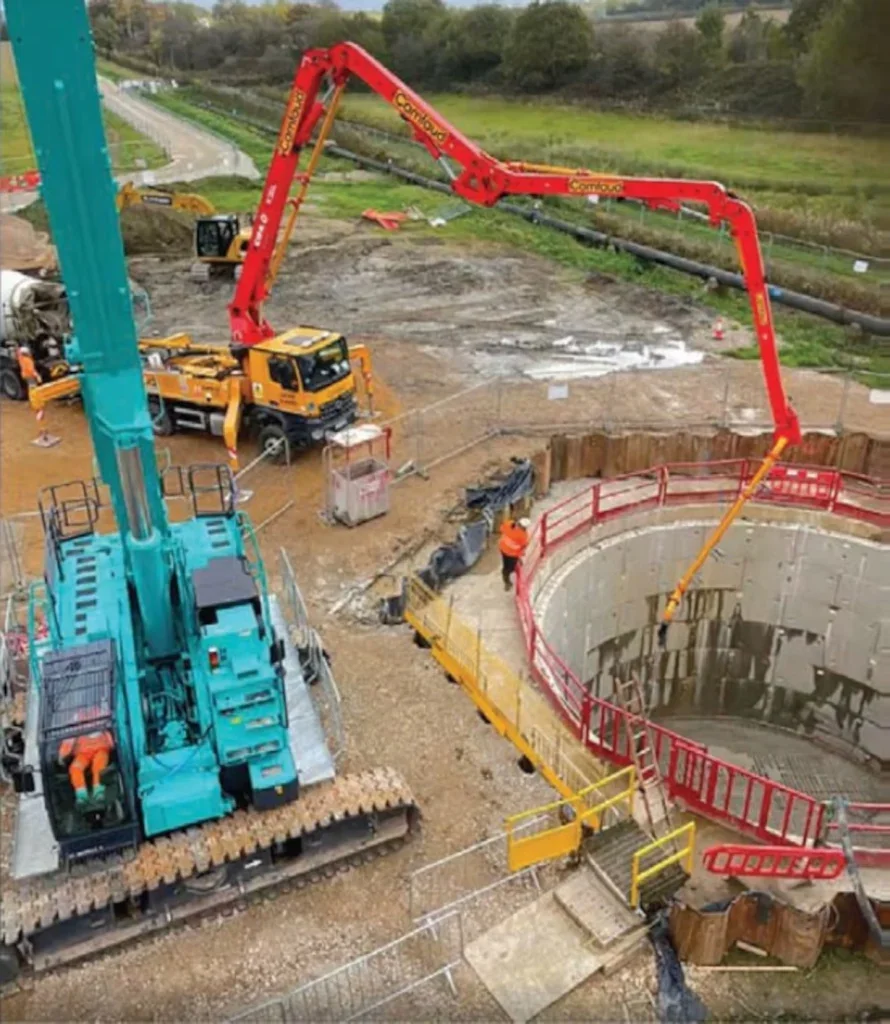
It automatically monitors the variable track widths and slew position in real time along with the data fed into the crane’s control system to calculate the optimum load chart for the actual setup.
“Our investment in the LTR 1150s is part of our ongoing commitment to sustainability and innovation in lifting solutions,” commented Clare Rodgers, Select Plant Hire’s Business Stream Leader – Lifting Solutions. “These cranes bring enhanced efficiency and significantly lower emissions, allowing us to offer clients greener alternatives without compromising on performance or flexibility. With each new addition to our fleet, we’re not only elevating our lifting capabilities but also helping to drive sustainable practices within the construction industry.”
Also on display at the last Vertikal Days tradeshow was Kobelco Construction Machinery’s latest telecrawler, the TKE750G, which, like the Liebherr LTR 1150, also debuted at Intermat 2024. The unit had been purchased by UK tunnelling contractor Active Tunnelling and is the first such model in the UK.
The telescopic crawler crane has a maximum lifting capacity of 75 metric tonnes. It is equipped with an EU Stage V-compliant Mercedes-Benz E9H01 (Daimler OM936LA) engine and is built on the same technology as the company’s G series lattice boom crawler crane models.
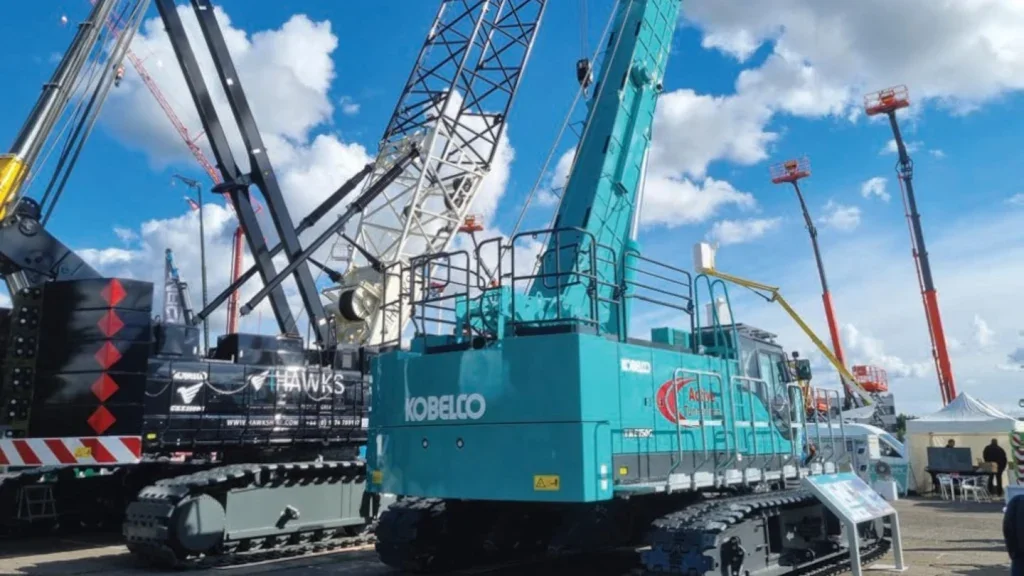
The crane has recently completed its first job in Chesterfield where it was working on a 10.5 metre ID Caisson shaft on behalf of construction group Galliford Try and water company Yorkshire Water. According to Active Tunnelling the crane is bringing improved automation, safety enhancements and reducing its carbon footprint.
It is evident that the rugged yet flexible characteristics of the telecrawler are delivering versatility across diverse applications and, as such, appeal to contractors around the world. From foundation work in Europe to dam remediation projects in the United States, telecrawlers really are redefining efficiency, environmental responsibility, and adaptability in the lifting industry.
CANADA’S NORTHBANK CIVIL AND MARINE PURCHASES A TADANO GTC-1600
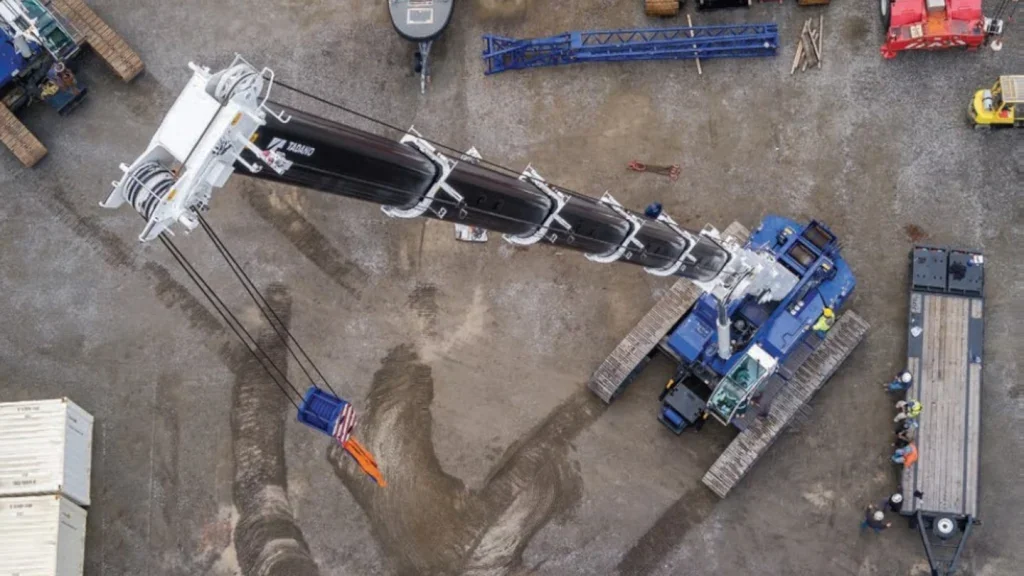
In 2024 Northbank Civil and Marine, a heavy civil, marine, and industrial constructor located in Vancouver, Washington, USA, needed a powerful and versatile crane for multiple dam projects. Lennon Crane – the Tadano distributor in Washington and Oregon – had the solution with a Tadano GTC-1600 telescopic crawler.
The 160-ton (145 tonne) crane has a 200.1-ft boom, a Cummins engine and the ability to operate in confined spaces with tracks at multiple widths. Northbank’s new Tadano telecrawler’s first job was on a barge to perform work at the Willamette Falls Dam in Oregon City, Oregon. It was then mobilised to Kachess Lake and Bull Run Reservoir for dam remediation work.
According to Tadano, the crane has the longest boom in its class, plus streamlined setup features including self-erecting counterweights, single-stage high-lift carbody jacks with remote control, and tool-free track frame removal and handling, designed for greater operating efficiency.


